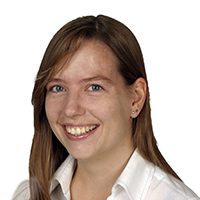Welcome to the seventeenth issue of Science in School Editorial article

Photolab
Of course, people differ not only in their humour but also in many other ways, including skin colour, hair thickness and the ability to digest starch or lactose. What is the genetic basis of such differences, and could they have been evolutionary adaptations to a changing environment? Jarek Bryk tells us how scientists investigate these questions.
Once scientists have the genetic data, how do they analyse it? Bioinformatics is an important tool; with Cleopatra Kozlowski’s activity you can try some of the techniques yourself, exploring phylogeny with a pen and paper.
Do you teach physics rather than biology? Then you might like two of this issue’s teaching activities: modelling the trajectory of a projectile, or a laser pen for beaming music across the classroom. For chemistry teachers, our nanoscale experiments offer an interdisciplinary activity.
Nanoparticles are also at the heart of cloud formation, as Karin Ranero Celius explains. The physics of these masses of water droplets or ice crystals is quite complex, and scientists are still learning how clouds and climate influence each other.
Tim Harrison and Dudley Shallcross also have their heads in the clouds: they commemorate the 25th anniversary of the discovery of the hole in the ozone layer by investigating the chemistry of how the hole formed and why it’s going to get smaller. Ice clouds in the stratosphere are at the core of the matter, yet amazingly, even at high altitudes, clouds can consist of water droplets rather than ice. Tobias Schülli investigates this phenomenon, known as supercooling.
Moving even further away from Earth, into space, we enter the realm of astronomers. Marvel with Jochen Liske at huge telescopes in remote places and learn about his involvement in Das Auge 3D, a 3D film about the Very Large Telescope in Chile’s Atacama Desert.
Making science visually appealing definitely helps in the classroom – but how do you do this when teaching blind and visually impaired youngsters? Werner Liese shares his experiences in this issue’s teacher profile.
This and several other articles in this issue are available online only – so do visit the Science in School website.
Finally, don’t forget that there are many ways in which you, too, can contribute to Science in School, see the ‘Get involved’ tab on the right to find out more.





